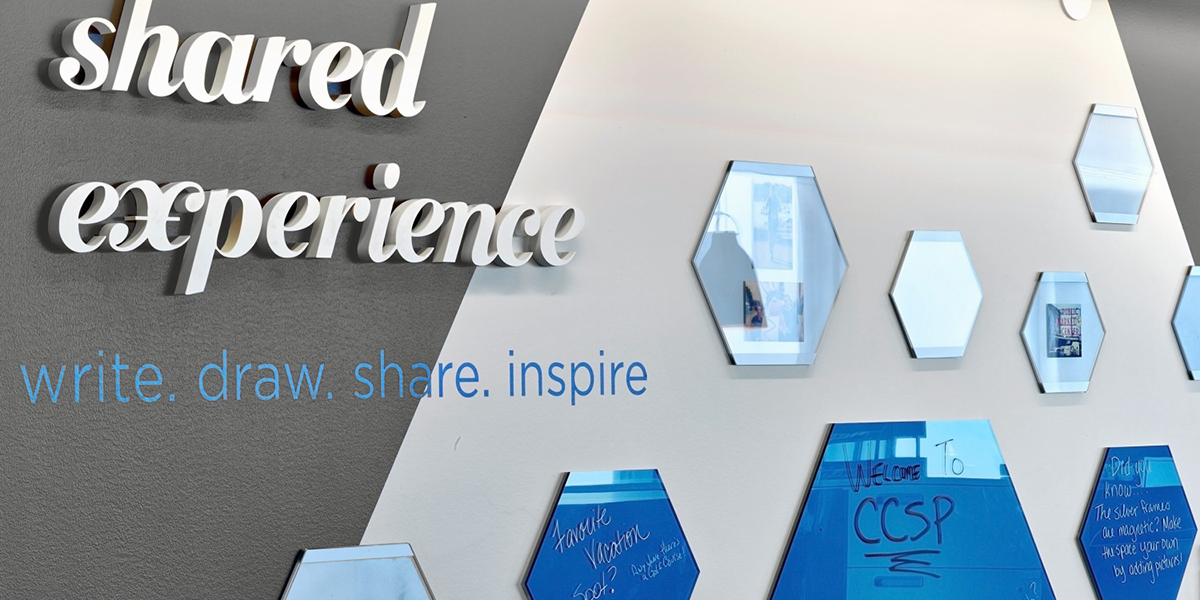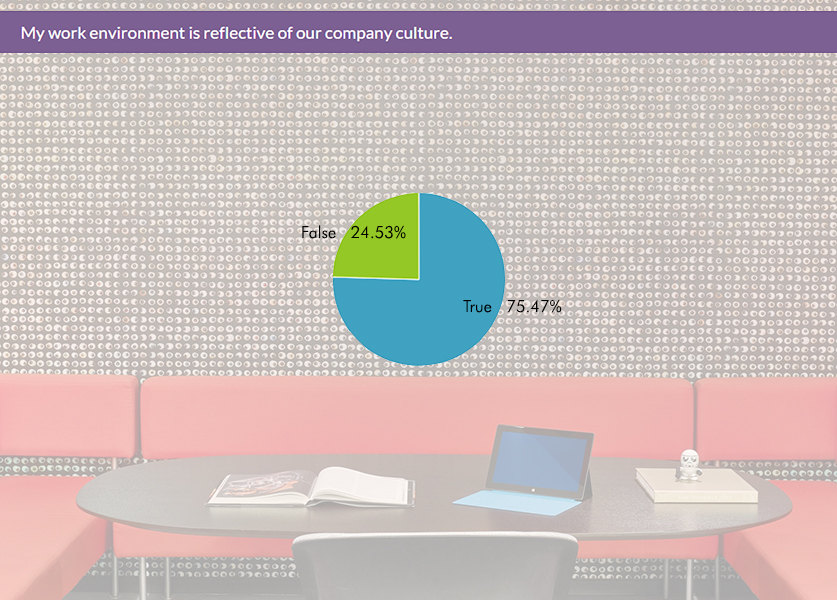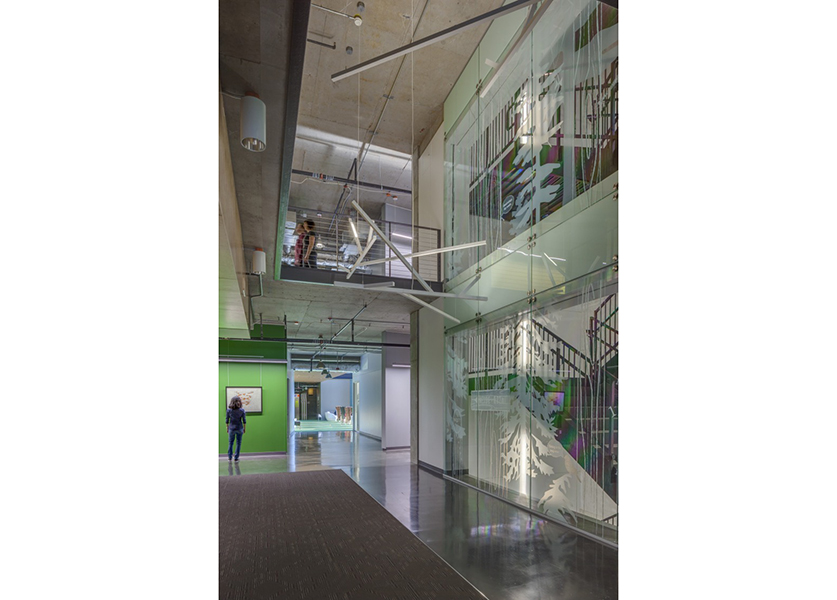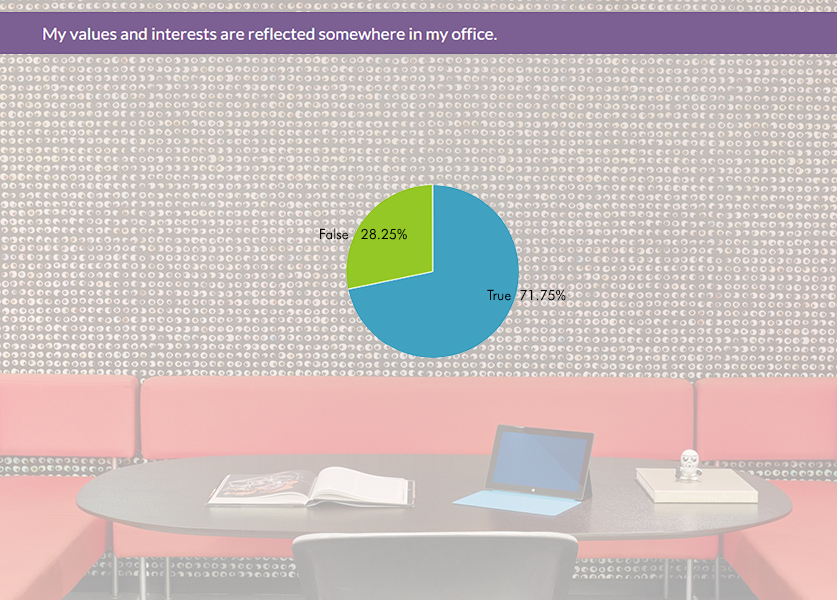Through strategic and well-executed environmental graphic design, companies can represent and redefine corporate culture and that of their staff.

Across a vast majority of IA’s environmental graphic design (EGD) in 2015, there was a resounding theme: An office should be personalized – not just with the identity of the company, but with the identity of everyone who works there. We predict a continued emphasis on the representation of corporate culture, personalized by the resident workforce, throughout 2016.
In IA’s 2016 Preview Survey, 75 percent of survey respondents agreed that their current work environment is reflective of the company culture, and 72 percent agree that their values and interests are reflected somewhere in their office. Reported preferences of the latest generation to enter the work force, millennials, represents a desire to work for a company that aligns with personal values, as well as a shift in the approach employers are taking towards staff. The immediate future of EGD in corporate interiors will reflect touchpoints and milestones by guiding employees and companies towards the desired culture versus the current culture.

For example, if an organization needs to foster more collaboration and engagement, it can facilitate that change by providing the spaces where that can happen, with environmental graphics that reinforce how to use the space. Super-sized text installations, such as Enjoy at the coffee bar or Focus in small enclave rooms, gently reminds employees to do those things not only in designated spaces, but throughout the day. More directly, EGD can guide employees during times of transition, and aid the change management process.
Through strategic EGD installations, we can encourage employees to make healthy choices throughout their day while simultaneously helping clients indirectly promote wellness. For example, simple distance markers laser cut into carpet tiles form a walking track around the central core of health-focused HCSC in Chicago.

In another project, environmental graphics transformed exit stairwells into focal points. Instead of a solid fire wall, the stairwell was fit out with a glass front which feeds directly into collaborative scrum areas on every other floor. Transparent graphics applied directly to the glazing tell a story that spans the full height of the building with details related to the actual elevation of where you are in the building: Think of the “You Are Here” cue on a map, but with a visual story telling component. Hidden within the graphics are several “easter-eggs” relating back to the company culture.

Brand Accessibility
We help our clients achieve this balance of corporate and employee-driven graphic expression through their own savvy: Our clients are becoming more involved in the design process, which, in turn, encourages employee engagement and authentic brand development. Over the past 10 years we have seen an increased awareness of the role of brand and culture in the built environment, as they are often driving factors of why potential recruits want to work with a company or not, and what drives consumer loyalty. Those decisions hinge on how potential employees identify with a company’s values and culture.

Good design is more accessible than ever before, from retailers like Target to experiential advertising that wraps every inch of your subway car to websites like Fast Company and Pinterest. This accessibility is driven largely by technology, which continues to change the landscape of all markets. In turn, clients need spaces and messages that can evolve very quickly and it is interesting to observe that the fastest response is often not just AV screens. Solutions are often lo-tech installations that drive end user interactivity and engagement through direct customization. Everyone, no matter their creative ability or level of interest, now has the opportunity to be a creator, not just an observer. Because of this accessibility empowering us to all be creators, clients come to the table with ideas and a more sophisticated visual understanding of what is possible.
This level of engagement creates fun and exciting design outcomes. Our clients want innovation and they push us to do more. We are challenged to go beyond simply adding a logo and mission statement to the wall, to thoughtfully interpret our clients’ brand within their three-dimensional space. And we gladly accept that challenge in 2016.
IA is a global firm of architects, designers, strategists, and specialists. We focus exclusively on environments through the lens of interior architecture—a radical idea in 1984, when IA was founded. We are highly connected agents of change, committed to creativity, innovation, growth, and community.
IA is a global firm of architects, designers, strategists, and specialists. We focus exclusively on environments through the lens of interior architecture—a radical idea in 1984, when IA was founded. We are highly connected agents of change, committed to creativity, innovation, growth, and community.


